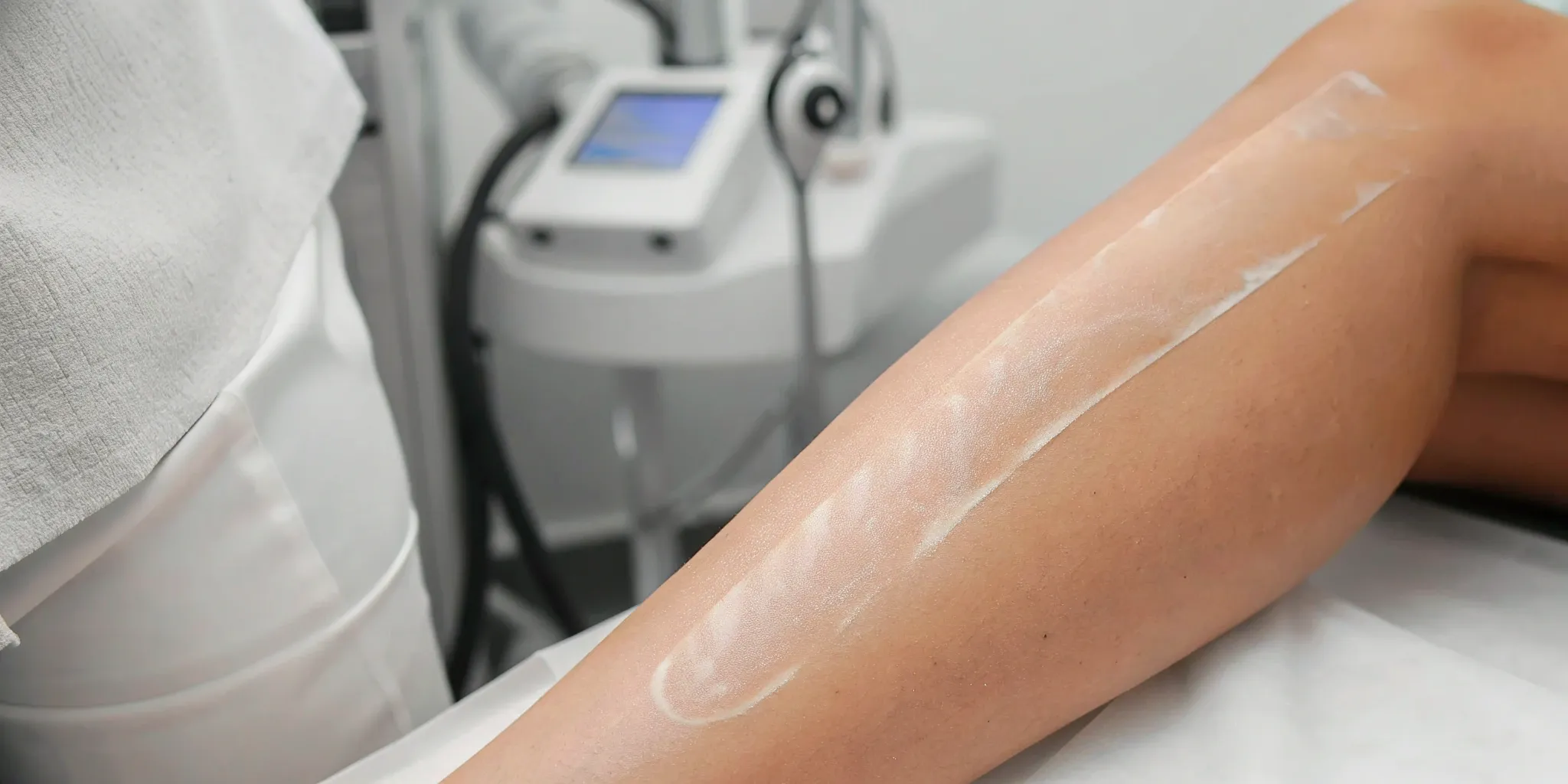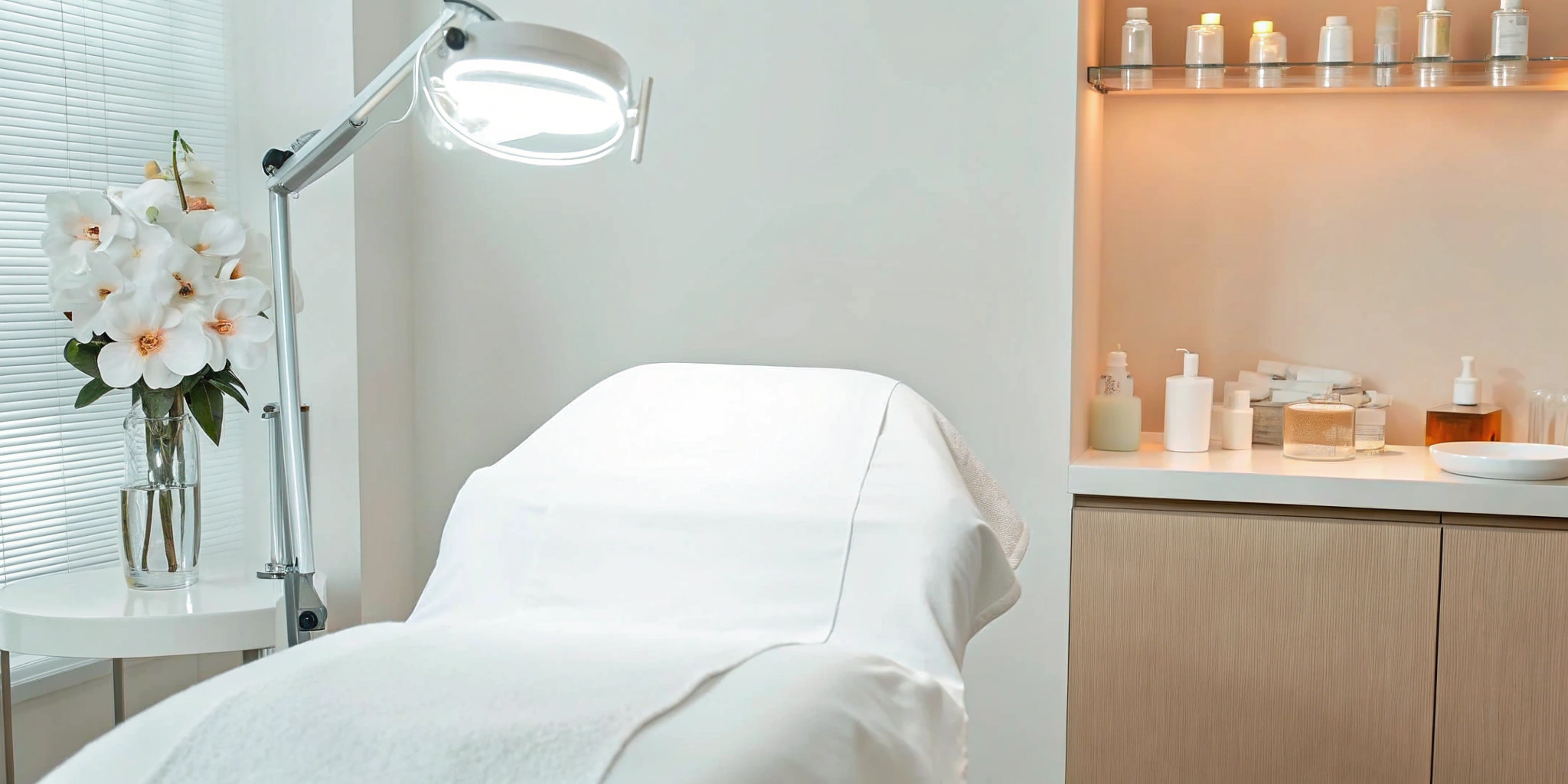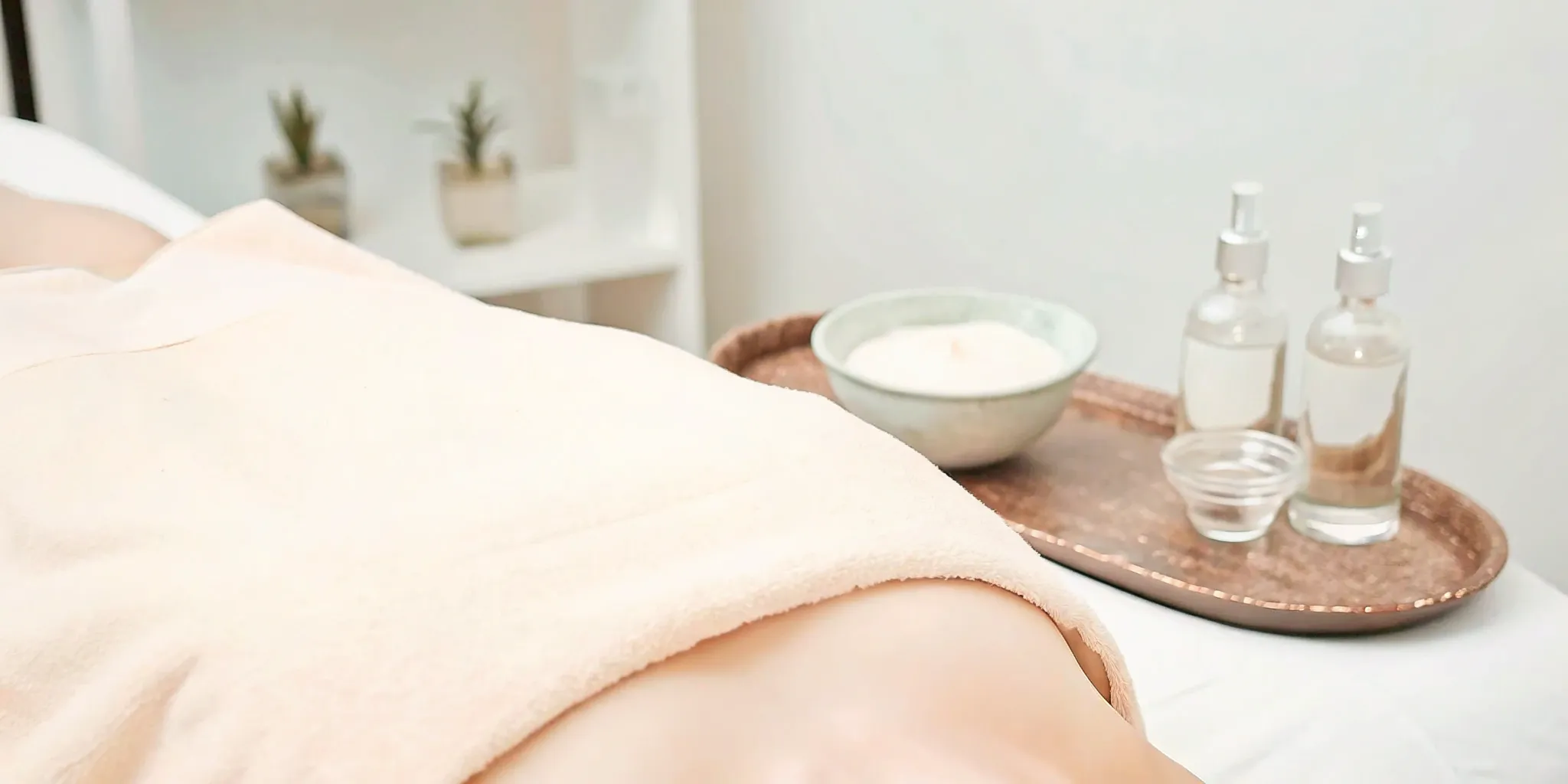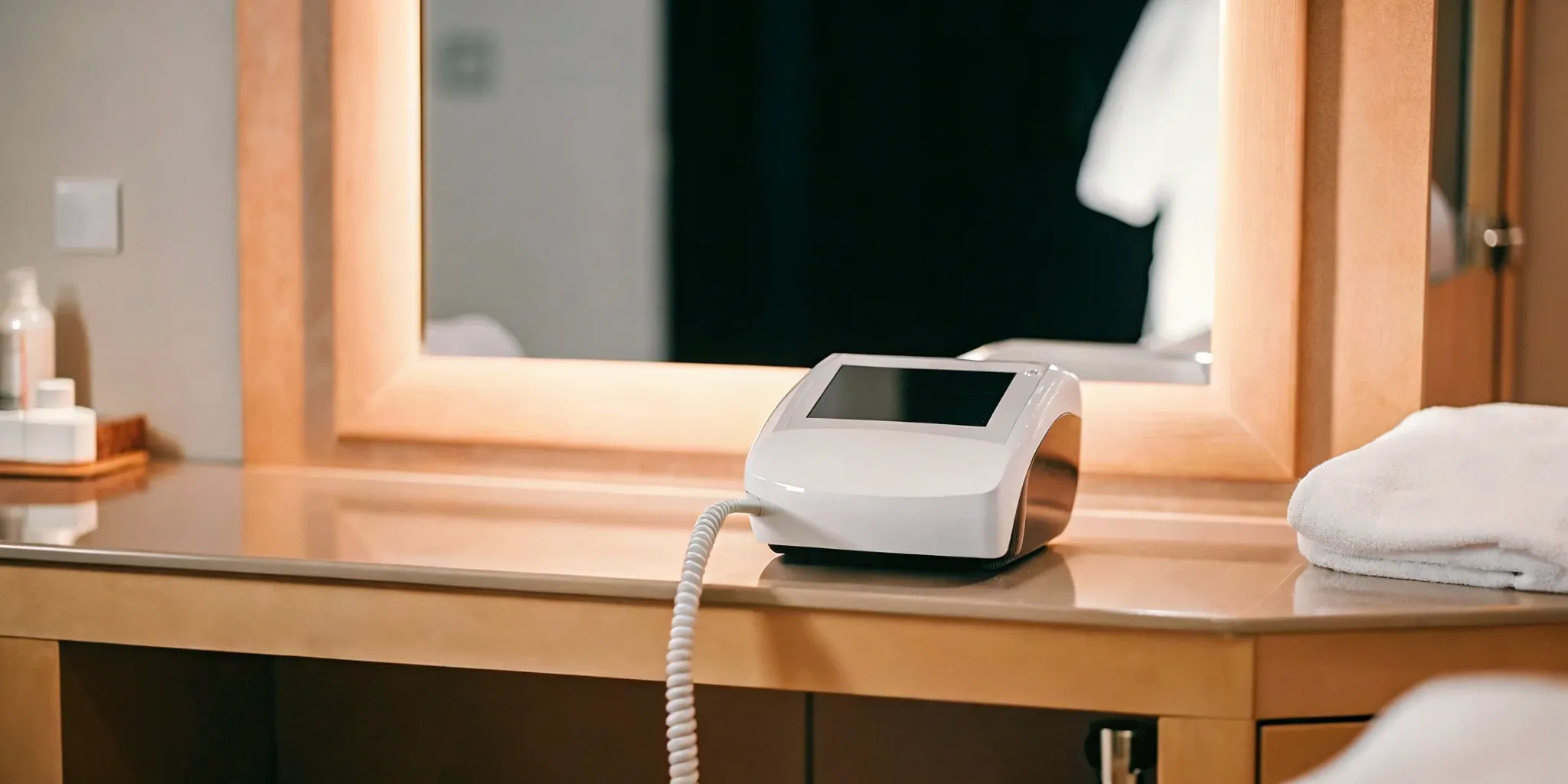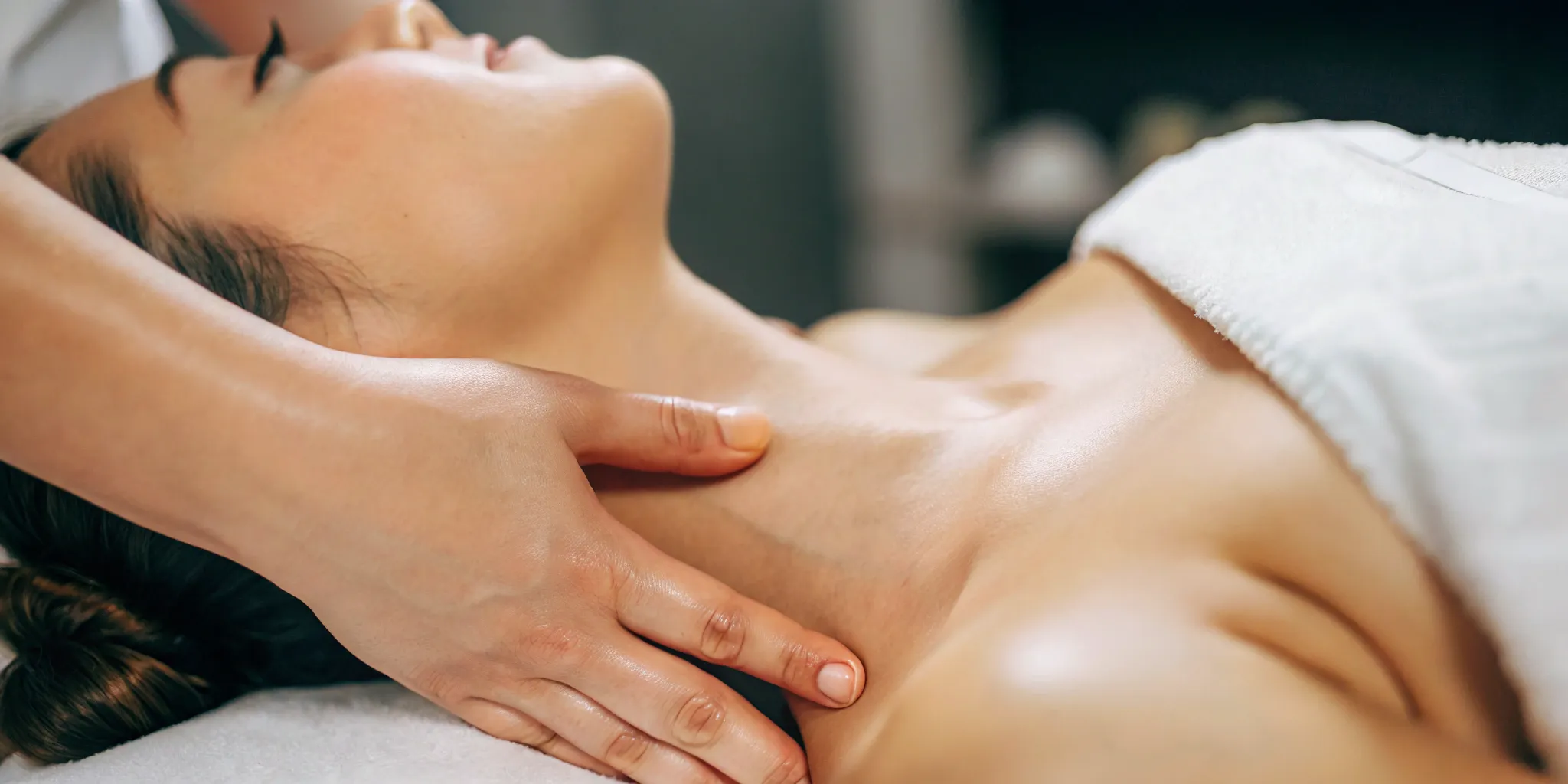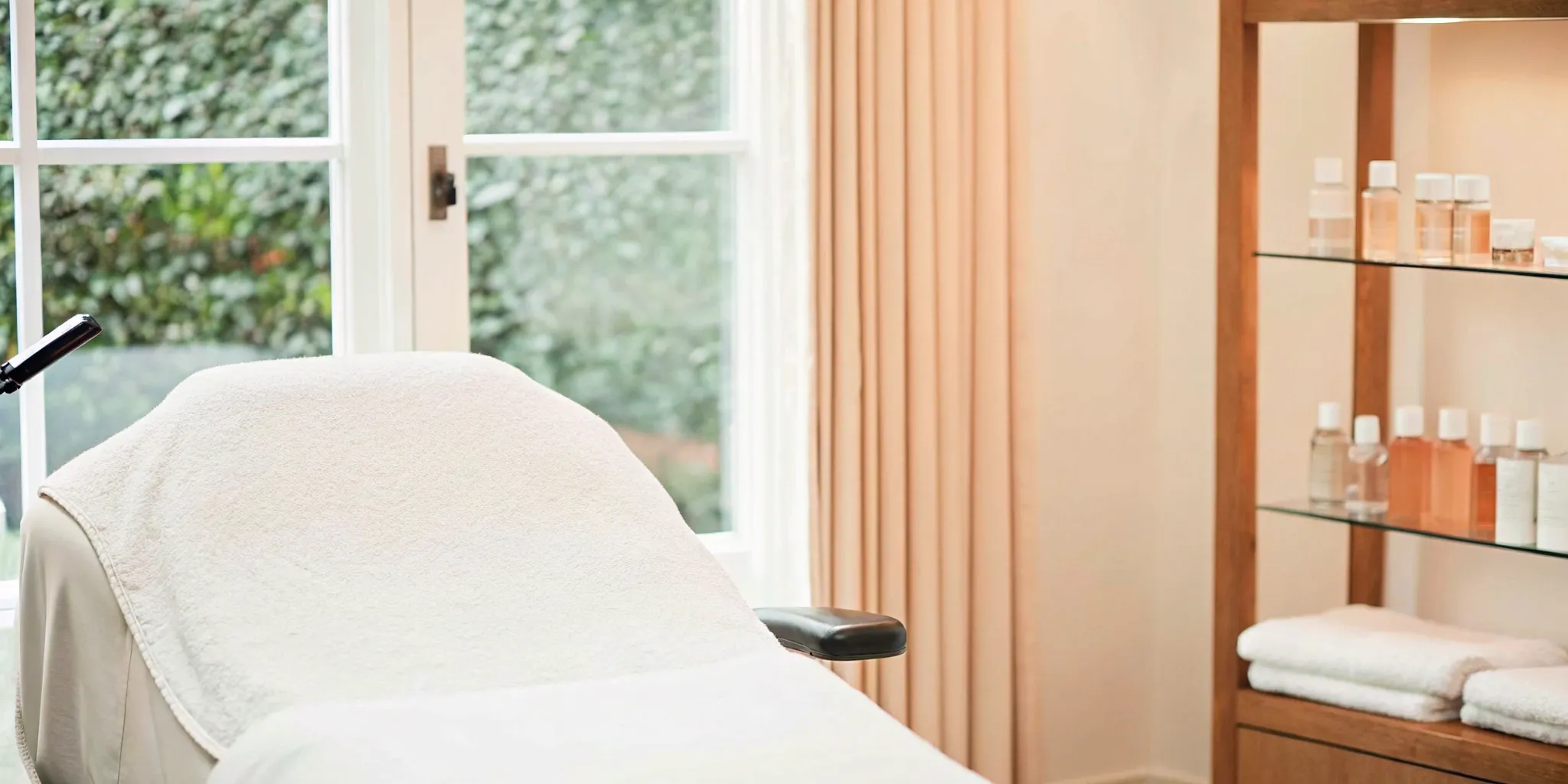Some investments pay dividends in confidence, and for many seeking a more defined facial structure, buccal fat reduction is one of them. It’s a permanent solution for achieving a more sculpted look that diet and exercise can’t touch. But before you can move forward with this life-changing decision, you need a realistic financial plan. Let’s talk openly about the buccal fat reduction cost. This guide will walk you through the typical expenses, what influences the price, and the financing options available, helping you decide if this investment aligns with your personal and financial goals.
Key Takeaways
- Get a complete cost breakdown: The price you’re quoted should cover more than just the surgeon’s fee. Confirm that it includes anesthesia, facility charges, and follow-up visits to create an accurate budget and avoid hidden expenses.
- Prioritize the surgeon over the price tag: Your results and safety depend entirely on your surgeon’s skill. Always choose a board-certified professional whose before-and-after photos reflect the natural-looking results you want.
- Plan for a one-time investment: Buccal fat reduction offers permanent results, meaning the fat pads don’t grow back. Because it’s a lasting change, consider financing options to make this valuable, one-time procedure more accessible.
What Is Buccal Fat Reduction?
If you feel like you have a permanent “baby face” or round cheeks that don’t seem to slim down no matter your fitness level, you’ve probably heard of buccal fat reduction. This procedure has gained a lot of attention for its ability to create a more sculpted, contoured facial profile. But what exactly is it? Simply put, everyone has buccal fat pads located deep in their lower cheeks. For some people, these pads are naturally larger, contributing to a fuller look. Buccal fat reduction is a surgical procedure designed to reduce the size of these pads, resulting in a slimmer lower face and more defined cheekbones and jawline. It’s a targeted solution for those who want to refine their facial structure beyond what diet and exercise can achieve.
How the Procedure Works
The process itself is surprisingly straightforward. Your surgeon makes a small, discreet incision on the inside of your cheek, so you don’t have to worry about any visible scarring on your face. Through this tiny opening, they carefully access and remove a small amount of the buccal fat pad—just enough to create a subtle, natural-looking contour. Once the fat is removed, the incision is closed with dissolvable stitches, which disappear on their own as you heal. The entire procedure is typically quick, often completed in under an hour, making it a manageable option for achieving that refined look you’re after.
Who Is a Good Candidate for This Procedure?
This procedure isn’t for everyone, and that’s okay! The best candidates are typically those who are bothered by the appearance of full, round cheeks and are seeking a more chiseled look. You should be in good overall health, a non-smoker, and at a stable weight you’re happy with. It’s also important to have realistic expectations about the outcome. Buccal fat reduction is great for adding definition, but it won’t completely change your face. It’s generally not recommended for people with naturally thin faces, as removing the fat could lead to a hollowed look later in life. The best way to determine if it’s right for you is to schedule a consultation to discuss your specific goals.
How Much Does Buccal Fat Reduction Cost?
Let’s talk about one of the biggest questions on your mind: the price tag. Understanding the cost of buccal fat reduction is a key step in deciding if this procedure is right for you. While the final price depends on your individual needs and goals, we can look at national averages to get a solid starting point. The total cost typically covers everything from the surgeon’s fee to anesthesia and facility charges, so it’s important to get a clear breakdown. Think of this as an investment in your confidence and facial harmony. Getting a personalized quote is the best way to create a clear financial plan for your aesthetic journey.
The National Average Price
So, what can you generally expect to invest? According to the American Society of Plastic Surgeons, the average cost of buccal fat removal is around $3,142. However, this is just an average, and the price can range anywhere from $2,000 to $5,000 for most people. In some complex cases or high-demand areas, the cost can be higher. This variability is completely normal and depends on the specifics of your procedure. The only way to know for sure what your cost will be is to sit down with a qualified professional for a one-on-one consultation.
How Location Affects the Cost
Just like with real estate, location plays a big role in the cost of cosmetic procedures. You’ll likely find that prices are higher in major cities and metropolitan areas where the cost of living and running a practice is greater. Beyond your city and state, the final price is also shaped by your surgeon’s level of experience, the type of anesthesia used, and the facility where the procedure is performed. To get an accurate picture of what buccal fat reduction costs here in Texas, the best first step is to schedule a consultation. This allows us to give you a detailed, personalized quote with no surprises.
What Factors Influence the Final Price?
When you receive a price quote for buccal fat reduction, you’re looking at a number that reflects several different components. The total cost isn’t arbitrary; it’s calculated based on specific, important factors that ensure your safety and the quality of your results. Understanding what goes into the final price helps you see the value behind the investment and make a more informed decision. From the surgeon’s background to the type of anesthesia you receive, each element plays a role in shaping the overall expense. Let’s break down exactly what influences that final number on your quote.
Your Surgeon’s Experience and Qualifications
A huge part of what you’re paying for is your surgeon’s skill and expertise. A highly experienced, board-certified surgeon who specializes in facial procedures will likely have a higher fee than a less experienced practitioner. This premium reflects their advanced training, a proven track record of successful outcomes, and a deep understanding of facial anatomy. Think of it as an investment in your safety and the quality of your final look. When you choose a reputable professional, you’re paying for peace of mind. Don’t hesitate to ask about our team’s credentials during your consultation.
The Clinic’s Geographic Location
Where your procedure takes place matters. Just as rent and salaries vary from city to city, so does the cost of cosmetic treatments. A clinic in a major metropolitan area with a higher cost of living will generally have higher operating expenses than one in a smaller town. These costs, which include rent, utilities, and staff salaries, are naturally factored into the price of their services. While it might be tempting to shop around for the lowest price, remember to balance location with the clinic’s reputation and the surgeon’s qualifications.
Facility Type and Associated Fees
The final price will also include fees for the facility where your surgery is performed. Procedures done in a hospital operating room tend to be the most expensive due to the extensive resources and staff involved. An accredited outpatient surgical center is often a more cost-effective yet equally safe alternative. At a private practice like ours, these fees cover the use of the sterile procedure room, specialized medical equipment, and the support of the clinical staff who assist during your treatment. These costs are essential for maintaining a safe, professional, and comfortable environment for all of our range of treatments.
Your Anesthesia Options
The type of anesthesia used for your buccal fat reduction directly impacts the cost. The procedure can often be performed with local anesthesia, which numbs the treatment area while you remain awake. This is typically the most affordable option. In some cases, general anesthesia may be recommended or requested, which involves being put to sleep for the duration of the procedure. Because general anesthesia requires an anesthesiologist and more intensive monitoring, it comes with a higher price tag. The best type of anesthesia for you will be determined during your consultation based on your specific needs and your surgeon’s recommendation.
A Complete Cost Breakdown
When you see a price for buccal fat reduction, it’s important to understand what that number actually includes. The total cost isn’t just a single line item; it’s a combination of several different fees that cover every step of your procedure, from the initial consultation to your final follow-up appointment. Thinking about the cost this way helps you budget accurately and avoid any surprises. Let’s break down the typical expenses you can expect to see on your final quote so you can feel fully prepared and confident in your financial planning.
The Surgeon’s Fee
This is usually the largest portion of the total cost, and for good reason. The surgeon’s fee pays for their expertise, time, and the skill required to perform your procedure safely and effectively. The price can vary quite a bit based on the surgeon’s experience and reputation. A highly sought-after surgeon in a major metropolitan area will likely have a higher fee than one in a smaller town. The American Society of Plastic Surgeons reports the average cost of the surgeon’s fee for this procedure is around $3,142, but remember this is just a national average. It’s a helpful starting point, but your specific cost will depend on your individual case.
Anesthesia Costs
Anesthesia is essential for keeping you comfortable and safe during the procedure, and its cost is a separate line item. Buccal fat reduction is often performed with local anesthesia, which is less expensive than general anesthesia. The final cost depends on the type of anesthesia used and the services of the anesthesiologist or certified registered nurse anesthetist (CRNA). During your consultation, your surgeon will discuss the best option for you. This fee covers not only the professional’s time but also the medications and monitoring equipment used to ensure your safety throughout the surgery.
Facility and Operating Room Fees
Your procedure needs to be performed in a sterile, safe, and well-equipped environment. The facility fee covers the cost of using the operating room, including the surgical equipment, lighting, and support staff who assist during the procedure. The cost can differ depending on whether the surgery is done in a private surgical suite, an ambulatory surgical center, or a hospital. At Ultimate Image MedSpa, we perform our services in a state-of-the-art facility designed for your comfort and safety. This fee ensures that every aspect of the environment meets the highest standards of care.
Pre-Op Consultations and Tests
Before your procedure, you’ll need a thorough consultation to confirm you’re a good candidate. The cost of this initial meeting is sometimes applied toward your final procedure price. You may also need some basic pre-operative lab tests to ensure you’re healthy enough for surgery. These are standard safety measures that protect your well-being. When you contact us to schedule your visit, we can walk you through any preliminary steps and associated costs. This preparation phase is key to designing a treatment plan that’s perfectly tailored to you.
Post-Op Care and Follow-Up Visits
Your care doesn’t stop once the procedure is over. The total cost should also account for post-operative care, which is critical for a smooth recovery and beautiful results. This can include prescription medications like antibiotics or pain relief, special recovery supplies, and all of your follow-up appointments. These visits allow your surgeon to monitor your healing progress, remove any stitches if necessary, and answer any questions you have. Factoring in these costs from the beginning ensures you have a complete picture of your investment in yourself.
Are There Other Expenses to Plan For?
When you’re budgeting for buccal fat reduction, it’s easy to focus on the main price tag from your surgeon. But to get a truly accurate picture of the total cost, you’ll want to think about a few other expenses that come up before and after the procedure. Planning for these ahead of time can save you from financial surprises during your recovery. From prescription medications to the right recovery supplies and the possibility of future refinements, let’s walk through what else you should factor into your budget so you can move forward with confidence.
Prescription Medications
After your procedure, your surgeon will likely prescribe medications to keep you comfortable and prevent infection. These typically include a pain reliever and an antibiotic. It’s important to remember that the cost of these prescriptions is usually not included in the surgical quote you receive from the clinic. To avoid any surprises at the pharmacy, it’s a great idea to ask your surgeon during your consultation what medications they typically recommend. You can then check with your insurance or local pharmacy to get an idea of the out-of-pocket cost. This small step helps you create a more complete and realistic budget for your treatment journey.
Essential Recovery Supplies
A smooth recovery is key to getting the best results, and that means having the right supplies on hand. For the first week or so, you’ll be on a liquid or soft-food diet to allow the incisions inside your mouth to heal properly. This is a good time to stock up on things like protein shakes, smoothies, soups, and yogurt. You might also want to purchase extra pillows to keep your head elevated while you sleep, which helps reduce swelling. Your surgeon may also recommend a special antiseptic mouthwash. Factoring these items into your budget ensures you can focus completely on resting and healing after your buccal fat reduction procedure.
Potential for Future Touch-Ups
While the goal is always to achieve your ideal look with one procedure, it’s wise to consider the possibility of future refinements. Sometimes, a minor touch-up may be needed to perfect the results. It’s also important to remember that our faces naturally change as we age. This is why choosing a highly experienced, board-certified surgeon is so critical—it significantly reduces the risk of complications or needing a corrective procedure. During your consultation, don’t hesitate to ask about the clinic’s policy on revisions. Understanding these details upfront gives you peace of mind and a full financial picture before you commit to any aesthetic services.
How to Pay for Your Procedure
Once you have a clear price quote, the next step is figuring out how to cover the cost. Since buccal fat reduction is a cosmetic procedure, it’s typically not covered by health insurance. But don’t let that discourage you! Many people use financing to make their aesthetic goals a reality. Thinking about the investment can feel overwhelming, but there are several straightforward payment solutions available that can make the procedure much more accessible for your budget.
At Ultimate Image MedSpa, we believe in making your beauty goals attainable. We’re happy to walk you through the different payment avenues during your consultation. Let’s explore some of the most common and effective ways to pay for your treatment.
Medical Credit Cards and Healthcare Financing
One of the most popular ways to cover cosmetic procedures is through specialized financing plans. Medical credit cards, like CareCredit, are designed specifically for health and wellness expenses. They function like regular credit cards but often come with attractive promotional financing offers. For example, you might find a plan that allows you to make payments over several months without any interest, as long as you pay the full amount by the end of the promotional period. This gives you the flexibility to get your procedure now and pay for it over time in a way that fits your financial situation. Be sure to ask about these options during your consultation to see what you qualify for.
Personal Loans and In-House Payment Plans
Beyond medical credit cards, you have other great options. Some patients choose to take out a personal loan from their bank or a credit union. Another convenient route is to see if your provider offers in-house payment plans, which allow you to pay the clinic directly in a series of installments. This can be a simple way to manage the expense without involving a third-party lender. Whichever path you consider, it’s always a smart idea to get a full breakdown of the costs so you can plan accordingly. Make sure you understand all associated costs, including any fees for the facility or anesthesia, to avoid any surprises down the road.
How to Find a Qualified Surgeon
Choosing the right surgeon is the single most important decision you’ll make in your buccal fat reduction journey. While cost is a practical consideration, the skill, experience, and artistry of your provider will determine the quality of your results and the safety of your procedure. Finding someone you trust completely is non-negotiable. The process involves a few key steps: verifying their credentials, carefully reviewing their past work, and having an open and honest conversation during your consultation.
Think of this as building your personal team of experts. You want a surgeon who not only has the technical proficiency but also understands your aesthetic goals. They should be able to translate your vision into a result that looks natural and enhances your unique features. A great provider will guide you through all your options, including both surgical procedures and non-invasive treatments like microneedling or a HydraFacial, to ensure you’re choosing the best path for you. Taking the time to do this research upfront will give you confidence as you move forward.
Why Board Certification Matters
When you see the term “board-certified,” it means a surgeon has gone through extensive, specialized training beyond medical school and has passed rigorous exams demonstrating their expertise in a particular field, like plastic surgery. The American Society of Plastic Surgeons emphasizes that you should always consult with a board-certified plastic surgeon, as their experience is a crucial factor. This certification is a promise of their commitment to the highest standards of patient safety and ethical practices. It’s your assurance that they are qualified, knowledgeable, and up-to-date on the latest techniques. Don’t hesitate to ask about a provider’s credentials—a reputable professional will be proud to share them.
How to Evaluate Before-and-After Photos
A surgeon’s before-and-after gallery is their visual resume. It’s your best tool for seeing their aesthetic style and the quality of their work. As you review before-and-after photos, look for patients who have a similar facial structure to yours to get a realistic idea of what might be possible. Pay attention to the subtlety of the results. The goal is a refined, natural-looking contour, not an overly hollowed or gaunt appearance. Also, check for consistency in lighting, angle, and patient expression between the photos. This ensures you’re seeing an accurate and honest depiction of the outcome.
What to Expect During Your Consultation
Your consultation is much more than just a price discussion; it’s a two-way interview. This is your opportunity to ask questions, express your goals and concerns, and get a feel for the surgeon and their team. A great surgeon will listen carefully, assess your facial anatomy, and explain whether you are a good candidate for the procedure. They should clearly outline the surgical plan, what to expect during recovery, and any potential risks. Don’t be shy—this is the time to get all the information you need to make a confident decision. When you’re ready to take the next step, our team is here to help you schedule a consultation and answer all your questions.
Prepare for Your Consultation
Walking into your consultation is a huge step, and feeling prepared can make all the difference. This is your dedicated time with a professional to get clarity on everything from the procedure itself to the final price tag. Think of it as an interview—you’re seeing if the provider is the right fit for you, and they’re making sure you’re a great candidate for the treatment. It’s the perfect time to discuss your aesthetic goals and ensure you and your provider are on the same page. A transparent provider will welcome your questions and take the time to explain everything clearly, so don’t be shy. This is about your health, your appearance, and your budget.
Remember, the goal of the consultation isn’t just to get a price. It’s to build a relationship of trust with the person who will be performing your procedure. You should leave feeling confident in their expertise and comfortable with the treatment plan they recommend. This is also your chance to see the facility and get a feel for the environment. A great consultation leaves you feeling empowered and excited, not pressured or confused. When you’re ready to have that conversation, you can contact us to schedule your one-on-one meeting. Our team is here to make sure you feel comfortable and informed every step of the way, helping you make a decision that feels right for you.
Key Questions to Ask About Cost
To make sure you leave with no surprises, have these questions ready. First, ask for a detailed, all-inclusive price quote. This helps you see beyond just the surgeon’s fee. Follow up by asking exactly what that number covers—does it include anesthesia, facility fees, pre-op appointments, and post-op care? Finally, it’s always a good idea to ask about any available financing plans or payment options. Getting these answers upfront will help you plan effectively and move forward with confidence.
How to Understand Your Price Quote
Once you receive your price quote, it should provide a clear breakdown of all associated costs. While national averages can range widely, your personal quote is the only number that matters. It will be tailored to your specific procedure plan, the type of anesthesia used, and other factors. Look for line items like the surgeon’s fee, facility costs, and anesthesia fees. If anything is unclear, ask for clarification. This is the perfect opportunity to discuss all associated costs with your surgeon to ensure you have a complete financial picture before making a decision.
Is Buccal Fat Reduction a Worthwhile Investment?
Deciding if a cosmetic procedure is “worth it” goes far beyond the price tag. It’s about weighing the cost against your personal goals, your confidence, and the longevity of the results. Buccal fat reduction is a significant decision because it creates a permanent change in your facial structure. For many, this is exactly what makes it a valuable investment. Instead of spending money on temporary fillers or other short-term solutions to create contour, this one-time procedure offers a lasting result.
The real value comes from achieving a look you feel great in. If you’ve always felt your cheeks were too full or wished for a more sculpted, mature facial appearance, this procedure can finally help you achieve that. It’s less about changing who you are and more about aligning your reflection with how you see yourself. Of course, the best way to determine if it’s the right investment for you is to get personalized advice. A professional can assess your facial anatomy, listen to your goals, and give you a clear picture of what to expect. You can always schedule a consultation to get the answers you need to make a confident choice.
A Look at Long-Term Results
One of the most compelling reasons people choose buccal fat reduction is the permanence of the outcome. During the procedure, the buccal fat pads in your cheeks are removed, and they don’t grow back. This means the slimmer, more defined facial contour you achieve is yours to keep. It’s a true one-and-done solution for reducing cheek fullness.
While the fat pads themselves won’t return, it’s important to remember that significant weight gain can cause other areas of your face to gain volume, which could alter the overall effect. For most people who maintain a stable weight, however, the results are beautifully consistent. You can expect a more angular, refined look in the lower face that enhances your natural bone structure for years to come.
Consider Non-Surgical Alternatives
Surgery is a big step, and it’s smart to explore all your options before committing. With so much information out there, it’s easy to run into myths and misconceptions about what different procedures can accomplish. While buccal fat reduction is uniquely effective for removing a specific type of facial fat, it’s not the only way to enhance your facial contours.
Depending on your specific goals, other non-surgical treatments might be a better fit or could be used to complement your results. For example, procedures that tighten skin or improve its texture can also contribute to a more sculpted and refreshed appearance without any downtime. Discussing your desired outcome with a specialist will help you understand the full range of possibilities and find the perfect path for you, whether it’s surgical or not.
Related Articles
- Fat Reduction Machines: A Guide to Body Contouring – Ultimate Image MedSpa
- Ultimate Fat Reduction Solutions: Say Goodbye to Stubborn Fat
Frequently Asked Questions
How long is the recovery process after buccal fat reduction? Most people feel ready to return to work and their usual routines within a week. The first few days will involve some swelling and a soft-food diet to protect the small incisions inside your mouth. While the initial swelling subsides fairly quickly, it can take a few months for the final, sculpted results to become fully visible as your tissues settle completely.
Will I have any visible scars from the procedure? No, you won’t have any visible scars on your face. The entire procedure is performed through small, discreet incisions made on the inside of your cheeks. These incisions are closed with dissolvable stitches that disappear on their own, leaving no trace on the outside.
Is the procedure painful? During the procedure itself, you won’t feel any pain because the area will be completely numb from local anesthesia, or you may be under general anesthesia. Afterward, it’s common to experience some soreness and swelling, similar to after a dental procedure. This discomfort is typically mild and can be easily managed with the pain medication your surgeon prescribes.
When will I see the final results? You’ll start to notice a change as the initial swelling goes down in the first couple of weeks. However, the true, final contour takes time to emerge. Your face will continue to refine over the next several months as all the residual swelling disappears. Patience is key, as the most defined and natural-looking outcome is typically visible around three to six months after the procedure.
What happens to my results if I gain or lose weight later on? The fat pads that are removed during the procedure are gone for good and will not grow back. This means the sculpted contour in your lower cheeks is permanent. However, it’s important to remember that the remaining fat cells in your face and body can still shrink or expand with significant weight fluctuations. Maintaining a stable weight will help ensure your beautiful results remain consistent for years to come.


